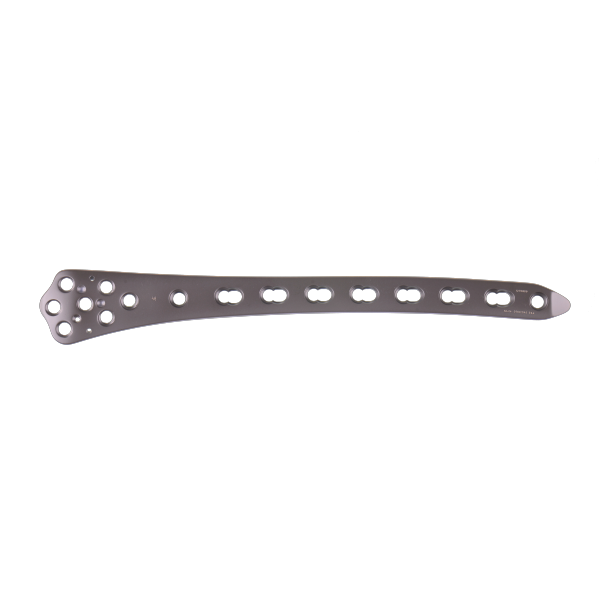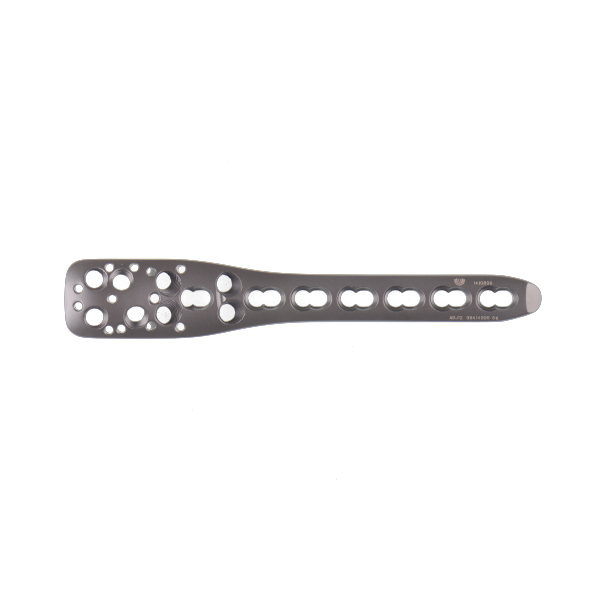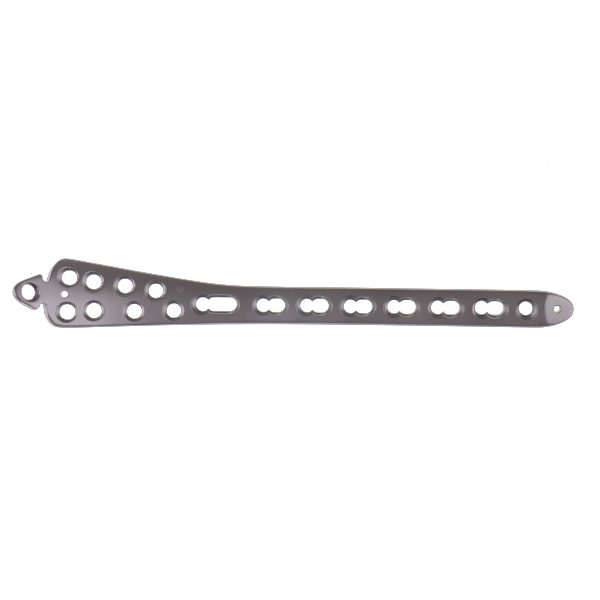Locking compression plates (LCPs) have revolutionized fracture fixation, offering enhanced stability and promoting early mobilization. This article provides a comprehensive overview of LCPs, covering their specifications, design, biomechanics, and clinical applications.
Specifications and Design
Locking compression plates combine the principles of conventional compression plating and internal fixation with threaded locking screws. This hybrid design allows for both compression and angular stability. Key features include:
- Combi holes: These holes accept both standard cortical screws for compression and locking screws for angular stability. The compression part of the hole is oval, allowing for compression across the fracture site. The threaded part accepts locking screws that create a fixed-angle construct.
- Threaded screw holes: These holes design are specifically to accommodate locking screws, which thread into the plate, creating a fixed-angle construct that prevents screw toggling and loss of reduction.
- Low-profile design: LCPs design are to minimize soft tissue irritation.
- Anatomically contoured plates: Many LCPs are pre-contoured to match specific anatomical regions, simplifying the surgical procedure and improving the fit.
Anatomy and Materials
LCPs are available in various shapes and sizes to accommodate different anatomical locations and fracture patterns. They are typically manufactured from biocompatible materials such as:
- Stainless steel: Offers high strength and corrosion resistance.
- Titanium alloys: Provide excellent biocompatibility, corrosion resistance, and lower stiffness compared to stainless steel.
Sizes
LCPs come in a wide range of sizes, lengths, and widths to suit different bone sizes and fracture configurations. Surgeons select the appropriate plate based on the patient’s anatomy and the fracture pattern.
Fixation
LCP fixation involves several key steps:
- Fracture reduction: The fracture fragments are carefully reduced to their anatomical position.
- Plate application: The appropriate LCP is selected and applied to the bone, ensuring proper alignment and contouring.
- Screw insertion: Cortical screws are used for compression if desired, followed by locking screws to create a stable, fixed-angle construct. The sequence of screw insertion is crucial for achieving optimal stability.
Biomechanics
The biomechanical advantages of LCPs stem from their fixed-angle stability. This feature:
- Prevents screw loosening: Locking screws create a rigid connection between the plate and the bone, preventing screw toggling and loss of reduction, especially in osteoporotic bone.
- Provides angular stability: The fixed-angle construct resists bending and torsional forces, promoting early mobilization and reducing the risk of secondary displacement.
- Preserves periosteal blood supply: The limited contact between the plate and the bone minimizes periosteal stripping, promoting fracture healing.
Clinical Applications of LCPs
LCPs application are wide for the treatment of various fractures, including:
- LCP Plate for Distal Femur Fracture: LCPs provide excellent stability for complex distal femur fractures, allowing for early weight-bearing.

- LCP Plate for Proximal Humerus Fracture: LCPs are effective for managing complex proximal humerus fractures, especially in osteoporotic patients.

- LCP Plate for Tibial Plateau Fracture: LCPs provide stable fixation for tibial plateau fractures, minimizing joint instability and promoting early range of motion.

- LCP Plate for Distal Radius Fracture: Volar LCPs are commonly for distal radius fractures, providing stable fixation and restoring wrist function.
- LCP Plate for Olecranon Fracture: LCPs offer stable fixation for olecranon fractures, allowing for early elbow mobilization.
- LCP Plate for Clavicle Fracture: LCPs for displaced midshaft clavicle fractures, promoting faster healing and better functional outcomes.
- LCP Plate for Calcaneus Fracture: LCPs provide stable fixation for complex calcaneus fractures, minimizing subtalar joint involvement.
Minimally Invasive LCP Plate Fixation
Minimally invasive techniques have been developed for LCP application, minimizing soft tissue disruption and promoting faster recovery. These techniques involve smaller incisions and specialized instruments for plate insertion and screw placement.
Conclusion
Locking compression plates have significantly improved the treatment of fractures, offering enhanced stability, promoting early mobilization, and improving patient outcomes. Their versatile design, biomechanical advantages, and wide range of applications make them an essential tool in modern orthopedic surgery. Understanding LCP specifications, design principles, and clinical applications is crucial for optimizing fracture management.
